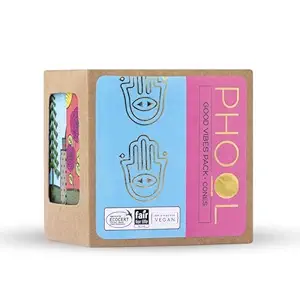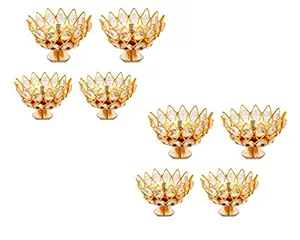ઉગ્યો છે ચાંદલો ને અજવાળી રાત,
માથે ગરબો ને ઘૂમે ખોડલ માં,
રમે ખોડીયાર માં, રમે ખોડીયાર માં,
રંગતાળી … ઉગ્યો છે ચાંદલો ને …
માંડ માંડ હશે માં મઢવાળી માવડી,
રંગે રંગે જાણે બાળકોની બાવડી,
આવી દયાળુ માડી તું છે સાકાર,
માથે ગરબો ને ઘૂમે ખોડલ માં,
સોળે શણગાર સજી આશાપુરા ઘૂમતા,
ગરબામાં આવી રમે છે રુમઝુમતા,
ઓઢી ચુંદલડીને વેલેરી ભાત,
માથે ગરબો ને ઘૂમે ખોડલ માં
Overview of “Ugyo Che Chandalo Ne Ajawali Raat”
Title Meaning
“Ugyo Che Chandalo Ne Ajawali Raat” means “The moon has risen and the night is luminous.” It evokes the beauty of a bright moonlit night in Garba/Raas tradition.
Origin & Tradition
This is an ancient/prachin Garba song, sung widely in Gujarat during Navratri and Raas-Dandiya nights. It has traditional roots in folk music and devotional performance. :contentReference[oaicite:0]{index=0}
When & Occasion
It is performed especially during Navratri, in evening Garba and Raas gatherings when devotees dance under the moon, celebrating divine presence. :contentReference[oaicite:1]{index=1}
Artist & Recording Info
This song has versions by singers like Hemant Joshi, Kirtidan Gadhvi, and other folk artists. It appears on platforms like Shazam and Spotify. :contentReference[oaicite:2]{index=2}
Lyrics Availability & Sources
Lyrics are published on sites like GujaratiSongsLyrics, including Gujarati script, sometimes with transliteration. This helps fans learn the song easily. :contentReference[oaicite:3]{index=3}
Lyrics & Theme
Emotion & Atmosphere
There is an emotional texture of joy, calm, festivity; the moonlight & dance combine to bring both peace and communal rejoicing. :contentReference[oaicite:7]{index=7}
Repetition & Chorus
Repetitive refrains like “Ugyo Che Chandalo Ne…” reinforce the melody, help the audience sing together and build energy during Garba nights. :contentReference[oaicite:8]{index=8}
Imagery of Moonlight
The lyrics open with the image of a moon rising and the entire night bathed in its light, setting a serene devotional atmosphere. :contentReference[oaicite:4]{index=4}
Dance & Movement References
Lines like “Garbo ne ghume Khodal ma” invoke images of devotees dancing circles in Khodal’s court, spinning and moving joyfully under moonlight. :contentReference[oaicite:5]{index=5}
Devotional / Mother Goddess Invocation
The song addresses Khodal Ma (a form of Mother Goddess), expressing devotion, love, and seeking her presence in the dance. :contentReference[oaicite:6]{index=6}
Musical & Performance Elements
Instruments & Rhythm
Traditional Garba instrumentation such as dhol, manjira, hand percussion support the rhythm; the beat matches the refrains for dance steps. (inferred from tradition) :contentReference[oaicite:9]{index=9}
Live vs Studio Version Differences
Live versions tend to be longer, with audience participation and possible improvisations; studio recordings are more polished in mixing and pacing. :contentReference[oaicite:10]{index=10}
Tempo & Dynamics
The song flows with a dynamic arc—gentle verses, building towards more spirited choruses—supporting the emotional journey and dance energy. :contentReference[oaicite:11]{index=11}
Audience Participation Cues
Chorus portions encourage call-&-response, clapping, repeated singing; these allow the crowd to join in easily. :contentReference[oaicite:12]{index=12}
Visual / Costume / Stage Imagery
Garba under moonlight, devotees in colorful attire, chundadi, ornaments—all amplify the festival mood along with lighting & decor. (common in Garba tradition) :contentReference[oaicite:13]{index=13}
Festival & Cultural Significance
Navratri Nights Role
This song is part of the Navratri Garba repertoire; sung in many Gujarati homes and community events during the nine nights. :contentReference[oaicite:14]{index=14}
Community Bonding
The communal Garba circle, shared singing under moonlight, strengthens social bonds and spiritual fellowship among participants. :contentReference[oaicite:15]{index=15}
Preserving Folk Lyrics
As a prachin (ancient) Garba geet, its lyrics, melody, and performance style help preserve Gujarati folk devotional art. :contentReference[oaicite:16]{index=16}
Emotional & Spiritual Upliftment
Participants often feel serenity, joy, faith, and connectedness when the song is sung, especially in moonlit dance settings. :contentReference[oaicite:17]{index=17}
How to Use & Share
Translation & Transliteration
Provide Gujarati original lyrics alongside transliteration and/or translation in Hindi/English for better reach among non-Gujarati speakers.
Audio / Video Embeds
Embed official audio tracks or lyric videos (YouTube, Spotify) to allow users to listen directly on the page and increase dwell time.
Printable Lyrics & Downloads
Offer a PDF/text printable version of the lyrics so devotees can carry or memorize offline or use in Garba events.
Performance Tips for Garba
Suggest dance steps timing, chorus leads, how to build performance energy under moonlight nights (lighting, costume cues).
SEO & Sharing Enhancements
Use meta descriptions with keywords like “Gujarati Garba”, “Ugyo Che Chandalo”, “Moonlight Garba”, include share buttons, tag with festival, artist names to improve indexing.
“Ugyo Che Chandalo Ne Ajawali Raat” means “The moon has risen and the night is luminous.” It evokes the beauty of a bright moonlit night in Garba/Raas tradition.
This is an ancient/prachin Garba song, sung widely in Gujarat during Navratri and Raas-Dandiya nights. It has traditional roots in folk music and devotional performance. :contentReference[oaicite:0]{index=0}
It is performed especially during Navratri, in evening Garba and Raas gatherings when devotees dance under the moon, celebrating divine presence. :contentReference[oaicite:1]{index=1}
This song has versions by singers like Hemant Joshi, Kirtidan Gadhvi, and other folk artists. It appears on platforms like Shazam and Spotify. :contentReference[oaicite:2]{index=2}
Lyrics are published on sites like GujaratiSongsLyrics, including Gujarati script, sometimes with transliteration. This helps fans learn the song easily. :contentReference[oaicite:3]{index=3}
There is an emotional texture of joy, calm, festivity; the moonlight & dance combine to bring both peace and communal rejoicing. :contentReference[oaicite:7]{index=7}
Repetitive refrains like “Ugyo Che Chandalo Ne…” reinforce the melody, help the audience sing together and build energy during Garba nights. :contentReference[oaicite:8]{index=8}
The lyrics open with the image of a moon rising and the entire night bathed in its light, setting a serene devotional atmosphere. :contentReference[oaicite:4]{index=4}
Lines like “Garbo ne ghume Khodal ma” invoke images of devotees dancing circles in Khodal’s court, spinning and moving joyfully under moonlight. :contentReference[oaicite:5]{index=5}
The song addresses Khodal Ma (a form of Mother Goddess), expressing devotion, love, and seeking her presence in the dance. :contentReference[oaicite:6]{index=6}
Traditional Garba instrumentation such as dhol, manjira, hand percussion support the rhythm; the beat matches the refrains for dance steps. (inferred from tradition) :contentReference[oaicite:9]{index=9}
Live versions tend to be longer, with audience participation and possible improvisations; studio recordings are more polished in mixing and pacing. :contentReference[oaicite:10]{index=10}
The song flows with a dynamic arc—gentle verses, building towards more spirited choruses—supporting the emotional journey and dance energy. :contentReference[oaicite:11]{index=11}
Chorus portions encourage call-&-response, clapping, repeated singing; these allow the crowd to join in easily. :contentReference[oaicite:12]{index=12}
Garba under moonlight, devotees in colorful attire, chundadi, ornaments—all amplify the festival mood along with lighting & decor. (common in Garba tradition) :contentReference[oaicite:13]{index=13}
This song is part of the Navratri Garba repertoire; sung in many Gujarati homes and community events during the nine nights. :contentReference[oaicite:14]{index=14}
The communal Garba circle, shared singing under moonlight, strengthens social bonds and spiritual fellowship among participants. :contentReference[oaicite:15]{index=15}
As a prachin (ancient) Garba geet, its lyrics, melody, and performance style help preserve Gujarati folk devotional art. :contentReference[oaicite:16]{index=16}
Participants often feel serenity, joy, faith, and connectedness when the song is sung, especially in moonlit dance settings. :contentReference[oaicite:17]{index=17}
Provide Gujarati original lyrics alongside transliteration and/or translation in Hindi/English for better reach among non-Gujarati speakers.
Embed official audio tracks or lyric videos (YouTube, Spotify) to allow users to listen directly on the page and increase dwell time.
Offer a PDF/text printable version of the lyrics so devotees can carry or memorize offline or use in Garba events.
Suggest dance steps timing, chorus leads, how to build performance energy under moonlight nights (lighting, costume cues).
Use meta descriptions with keywords like “Gujarati Garba”, “Ugyo Che Chandalo”, “Moonlight Garba”, include share buttons, tag with festival, artist names to improve indexing.


